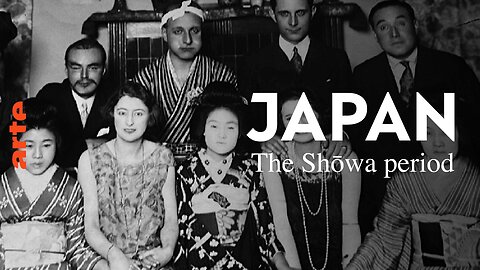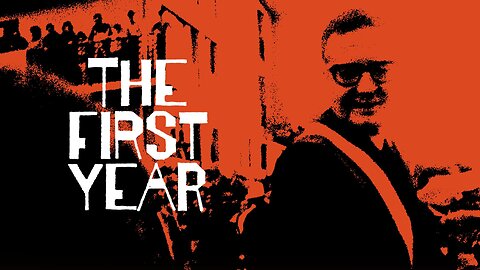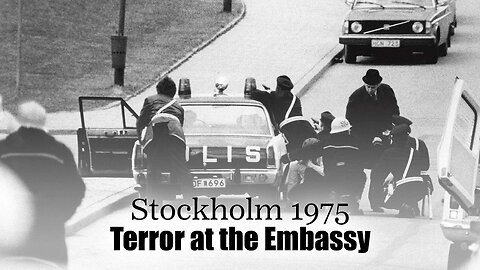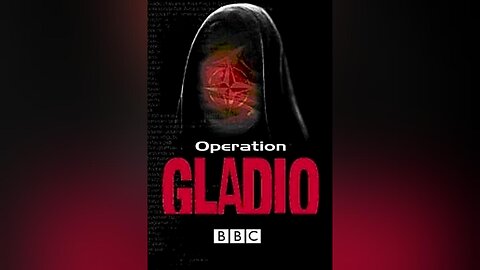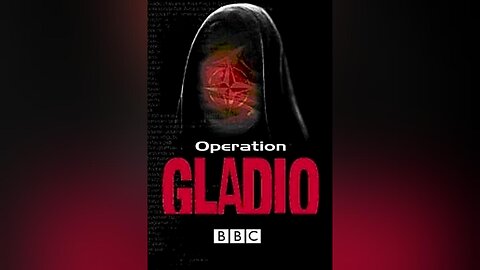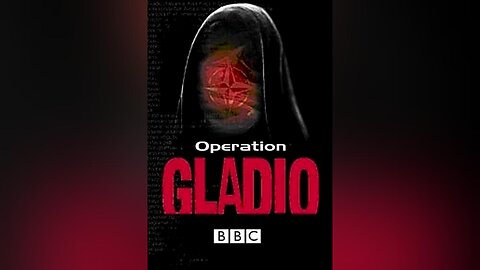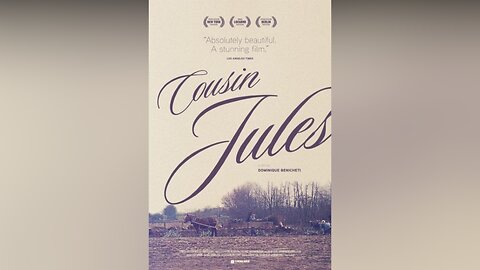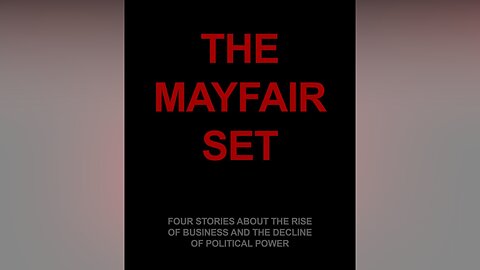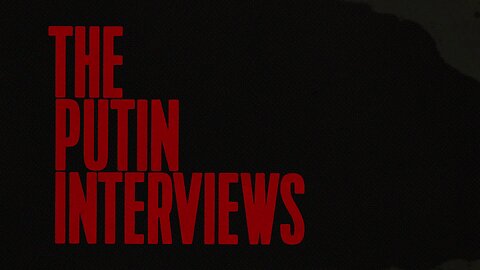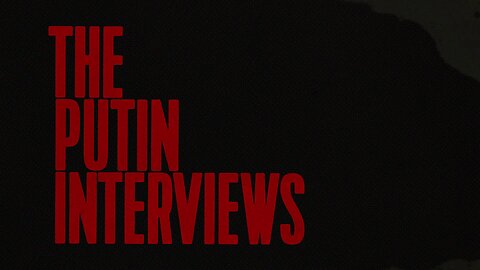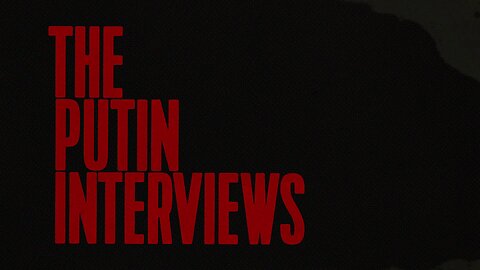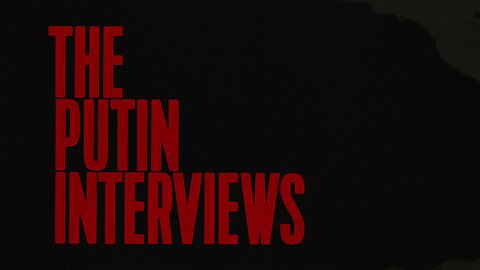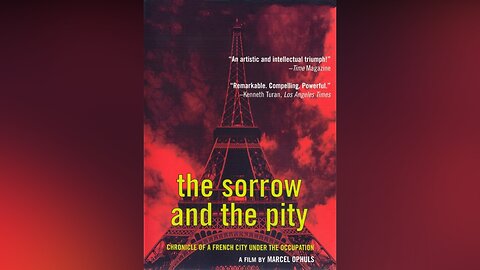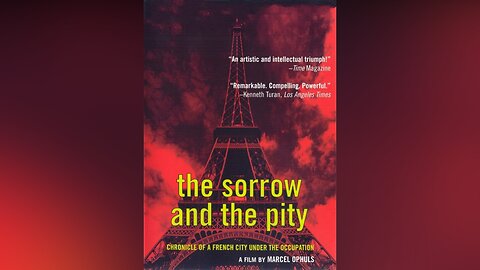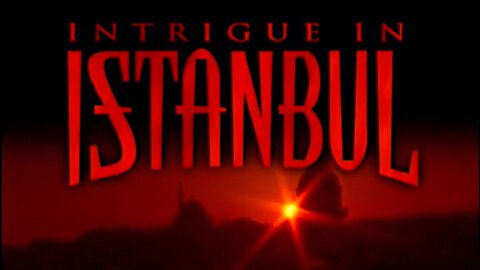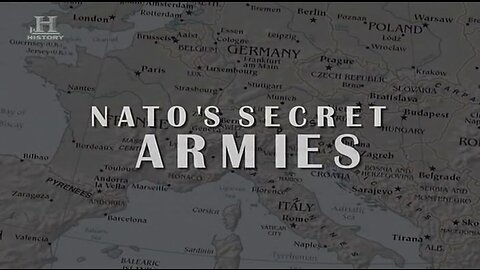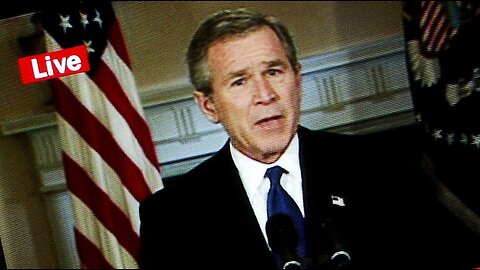Premium Only Content
This video is only available to Rumble Premium subscribers. Subscribe to
enjoy exclusive content and ad-free viewing.
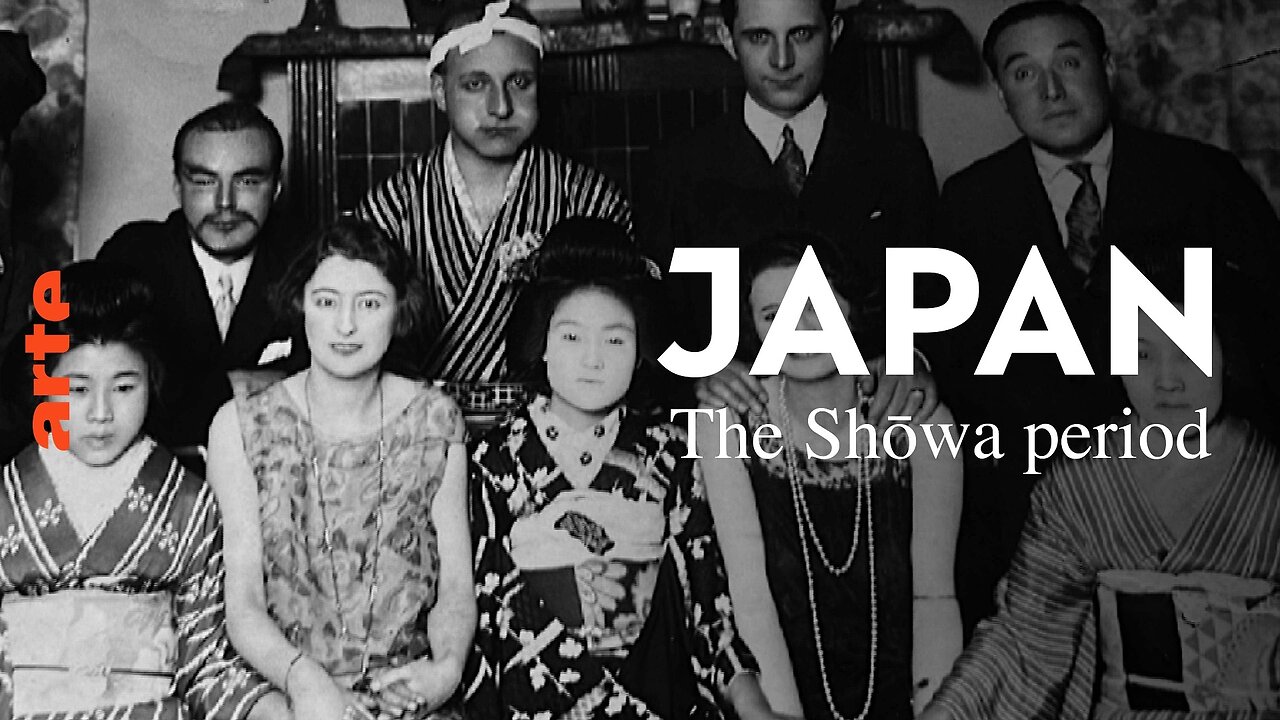
Japan: End of an Empire
Adaneth - History&Politics
A 2023 Documentary Film by Kenichi Watanabe. Audio in French with subtitles in English, Italian and Spanish (click on CC for subtitles).
A Franco-Belgian couple who settled in Japan in the 1920s witnessed a remarkable moment in history: The rapid industrialisation and adoption of western customs as well as the militarisation of the country over two decades, from its conquests in Asia to its terrible defeat in 1945. Their story is a gripping journey through Japan at a time of rapid change, war, and ultimately the end of an empire.
2
The First Year
Adaneth - History&Politics
A 1971 Documentary Film by Patricio Guzmán. Audio in French with subtitles in English, Italian and Spanish (click on CC for subtitles).
A focus on the first year of the Popular Unity government in Chile, where Salvador Allende was elected as President in September 1970.
3
Stockholm 1975: Terror at the Embassy | The Attack (Part 1 - MULTISUB)
Adaneth - History&Politics
A 2025 Documentary directed by Johanna Becker and Johannes Preuß. Audio in German with subtitles in; English, Italian, French, Spanish and German (click on CC for sutitles)
Stockholm, 24 April 1975. Six individuals armed with pistols, machine guns, grenades and explosives, infiltrate the West German embassy. They called themselves the "Holger Meins Commando", named after the member of the Red Army Faction (RAF) who had died in prison a few months earlier...
German Embassy siege in Stockholm, Sweden, was a hostage standoff initiated by the Red Army Faction (RAF) on 24 April 1975. Collectively, the attackers referred to themselves as Kommando Holger Meins, after Holger Meins, a RAF member who had died of starvation during a (collective) hunger strike in Wittlich Prison on 9 November 1974.
The RAF group carried out the attack with the goal of forcing the release of RAF members and others from prison in West Germany. During the siege they stated: "The Holger Meins Commando is holding members of the embassy staff in order to free prisoners in West Germany. If the police move in, we shall blow the building up with 15 kilos of TNT."
The group consisted of six members: Karl-Heinz Dellwo, Siegfried Hausner, Hanna-Elise Krabbe, Bernhard Rössner, Lutz Taufer and Ulrich Wessel. They entered the embassy, took thirteen embassy officials hostage (or twelve officials, according to some sources), including ambassador Heinz Dietrich Stoecker, and then proceeded to occupy the upper floors of the building.
Chancellor Helmut Schmidt, having experienced another hostage crisis just weeks before, was not prepared to negotiate with them. In response, economic attaché Hillegaart was made to stand at a window, and was then shot three times. With the murder of Hillegaart, the attackers announced they would execute one hostage every hour until their demands were met.
Part 2: https://rumble.com/v6zie3a-stockholm-1975-terror-at-the-embassy-the-bomb-part-2-multisub.html
4
Stockholm 1975: Terror at the Embassy | The Bomb (Part 2 - MULTISUB)
Adaneth - History&Politics
Part 2: Red Army Faction terrorists have occupied the West German embassy in Stockholm for seven hours. They have already killed one member of staff and are threatening to kill a hostage every hour if their demands are not met.
5
Operation Gladio: The Ring Masters (Part 1)
Adaneth - History&Politics
A 1992 Observer Film Company production for BBC Television, created by Allan Francovich, narrated by John Rowe.
Part 2: https://rumble.com/v6z5xcs-operation-gladio-the-puppeteers-part-2.html
A 3-part series revealing the crucial role the CIA has played in manipulating the political affairs of post-war Europe through the Gladio. The film features extensive interviews with Vincenzo Vinciguerra, from his jail cell in Italy, Libero Gualtieri, who headed up The Italian Parliamentary Inquiry into Operation Gladio, and around 40 other people involved with Operation Gladio.
Vinciguerra supports Federico Umberto D'Amato's claim that he founded the Club de Berne. D'Amato was an Italian secret agent, who led the Office for Reserved Affairs of the Ministry of Interior of Italy, from the 1950s till the 1970s, when the activity of the intelligence service was undercover and not publicly known. D'Amato was born in Marseille, and during World War II he worked for the US Office of Strategic Services. After the end of the conflict he was at the head of the North Atlantic Treaty Special Office, a link between NATO and the United States. In 1974, two days after the Piazza della Loggia bombing, he was removed from the position and assigned to the boundary police, although he kept a strong influence on the office until the 1980s. D'Amato was a member of Propaganda 2 (P2), a secret masonic lodge involved in numerous political and economical scandals in the 1970s.
The Club de Berne (CdB) is a deep state milieu described as "a preferred platform for exchange" between secret services, an operational structure that grew out of personal contacts, practically without democratic supervision. Members include the intelligence agencies of the 28 states of the European Union (EU), Norway, Switzerland and Israel, and the US intelligence agencies enjoy “observer status”. Other participating services include Australian ASIO and Canadian CSIS. The Counter Terrorism Group (CTG) is an offshoot of the Club and shares terrorism intelligence.
Operation Gladio is the codename for clandestine "stay-behind" operations of armed resistance that were organized by the Western Union (WU) also referred to as the Brussels Treaty Organisation (BTO), and subsequently by NATO and the CIA, in collaboration with several European intelligence agencies. The operation was designed for a potential Warsaw Pact invasion and conquest of Europe. Although Gladio specifically refers to the Italian branch of the NATO stay-behind organizations, "Operation Gladio" is used as an informal name for all of them. Stay-behind operations were prepared in many NATO member countries, and some neutral countries. During the Cold War, right-wing armed groups engaged in the harassment of left-wing parties, torture, terrorist attacks, and massacres in countries such as Italy. The role of the CIA and other intelligence organisations in Gladio—the extent of its activities during the Cold War era and any responsibility for terrorist attacks perpetrated in Italy during the "Years of Lead" (late 1960s–early 1980s)—is the subject of debate. In 1990, the European Parliament adopted a resolution alleging that military secret services in certain member states were involved in serious terrorism and crime, whether or not their superiors were aware. The resolution also urged investigations by the judiciaries of the countries in which those armies operated, so that their modus operandi and actual extension would be revealed. To date, only Italy, Switzerland and Belgium have had parliamentary inquiries into the matter.
The three inquiries reached differing conclusions as regarded different countries. Guido Salvini, a judge who worked in the Italian Massacres Commission, concluded that some right-wing terrorist organizations of the Years of Lead: La Fenice, National Vanguard and Ordine Nuovo were the trench troops of a secret army, remotely controlled by exponents of the Italian state apparatus and linked to the CIA. Salvini said that the CIA encouraged them to commit atrocities.
The Swiss inquiry found that British intelligence secretly cooperated with their army in an operation named P-26 and provided training in combat, communications, and sabotage. It also discovered that P-26 not only would organize resistance in case of a Soviet invasion, but would also become active should the left succeed in achieving a parliamentary majority.
The Belgian inquiry could find no conclusive information on their army. No links between them and terrorist attacks were found, and the inquiry noted that the Belgian secret services refused to provide the identity of agents, which could have eliminated all doubts.
A 2000 Italian parliamentary report from the left wing coalition Gruppo Democratici di Sinistra l'Ulivo reported that terrorist massacres and bombings had been organised or promoted or supported by men inside Italian state institutions who were linked to American intelligence. The report also said the United States was guilty of promoting the strategy of tension. Operation Gladio is also suspected to have been activated to counter existing left-wing parliamentary majorities in Europe.
The US State Department published a communiqué in January 2006 that stated claims the United States ordered, supported, or authorized terrorism by stay-behind units, and US-sponsored "false flag" operations are rehashed former Soviet disinformation based on documents that the Soviets forged.
Part 1: Reveals the origins of Operation Gladio in Italy. Teams of secret operatives have bombed and murdered innocent civilians to keep control of Europe for their political masters. Developed from "Stay-behind" - CIA, NATO and SIS clandestine networks at the end of World War 2 to resist the communist threat - this secret network changed from being defenders of state security into attackers of the established political order. It's only since the Gladio's existence was acknowledged in 1990 that the impact of its shadowy role in post-war Europe has emerged.
1
comment
6
Operation Gladio: The Puppeteers (Part 2)
Adaneth - History&Politics
Part 2 deals with the organisational structure and their operatives activities. Infiltration into various terrorists groups and co-operation with Secret Services in some of the major massacres that took place in Italy in the so-called "Years of Lead", such as Piazza Fontana and Bologna railway station bombings.
Part 3: https://rumble.com/v6z5y5w-operation-gladio-the-foot-soldiers-part-3.html
7
Operation Gladio: The Foot Soldiers (Part 3)
Adaneth - History&Politics
Part 3 examines the truth behind the kidnapping - and the subsequent assassination of Aldo Moro - and the killing of five men of his escort.
Aldo Moro at that time was probably, together with Giulio Andreotti, the most powerful politician in the country. He was spoken about openly as the next president of the republic and precisely that March 16, the Parliament was preparing to vote for confidence in the new government led by Andreotti, a government strongly supported by Moro, against many of his own party comrades: for the first time since 1947, the Communist Party would be an integral part of the majority. There was also discontent among the communists but his kidnapping and the massacre of the men of his escort overshadowed all the doubts that still hovered among the parliamentarians the evening before: the Chamber first and the Senate afterwards took very little time to vote for the confidence in the Andreotti government, in order to have an executive with full powers in what would be considered as the most difficult days in the history of the Republic.
This episode also reconstructs a series of unexplained and bloody killings a few years earlier in Belgium, when masked gunmen murdered people shopping in supermarkets (Brabant Massacres).
Voice of Aldo Moro: Sir Ian McKellen
Note: Since the time of this documentary, a lot of new information have come out in regards to Aldo Moro's assassination. New documents have been declassified and as from 2 October 2014 to 22 March 2018 a new parliamentary commission of inquiry was set up, to investigate on the case.
8
Cousin Jules (1972-Restored)
Adaneth - History&Politics
Le Cousin Jules (English: Cousin Jules) is a 1972 Documentary Film by Dominique Benicheti.
Filmmaker Dominique Benichetti, who died in 2011, was in his 20s when he began working on “Cousin Jules,” and spend five years recording the daily lives of two French farmers who live alone in the countryside. There is almost no dialogues, and there is no music. This is quiet study of French rural life. An ode to rural France and the simple joys of life.
The film captures the daily routine and rituals of Jules, a blacksmith, living with his wife, Felice, on a small farm in the French countryside. Both were born in 1891, but they represent a way of life that is much older. Jules, a blacksmith, works with a hand-cranked bellows and a battered metal stove, hammering out hasps and hinges with an ease and precision that represent generations of handed-down know-how. Jules and Félicie are residents of what is sometimes called “la France profonde,” a steadfast agricultural domain that has existed in parallel, and sometimes in opposition, to the industry and cosmopolitanism of Paris and other French cities.
2
comments
9
The Mayfair Set - Who Pays Wins (Episode 1)
Adaneth - History&Politics
The Mayfair Set, subtitled Four Stories about the Rise of Business and the Decline of Political Power, is a BBC television documentary series by filmmaker Adam Curtis.
It explores the decline of Britain as a world power, the proliferation of asset stripping in the 1970s, and how buccaneer capitalists helped to shape the climate of the Thatcher years, by focusing on Colonel David Stirling, Jim Slater, Sir James Goldsmith and Tiny Rowland—members of London's elite Clermont Club in the 1960s. Curtis wanted to engage with the moral ambiguity of figures such as Goldsmith.
Episode 1: The opening episode focuses on Colonel David Stirling and the birth of the global arms trade in the 1960s.
Contributors:
Charles Gordon-Lennox, 10th Duke of Richmond, friend of David Stirling
John Aspinall (filmed 1971)
Maj. Bernard Mills, ex-SAS; commander in Yemen Operation
Colin Campbell, friend and business partner of David Stirling
Said Aburish, Arab historian
Col. Johnny Cooper, ex-SAS; commander in Yemen Operation
Lord Healey, Minister of Defence 1964–70; Chancellor of the Exchequer 1974–79
Geoffrey Edwards (archive), Saudi-based arms dealer
Lord Caldecote, Director, English Electric 1953–69
Sheikh Ahmed Yamani, Saudi Energy Minister (interviewed 1974)
Victor Lownes, head of British Playboy 1966–81
Marilyn Cole, receptionist at Clermont Club 1974–77
Mayfair resident (filmed 1974)
Col. David Stirling (filmed 1974)
Kate Losinska, Head of Civil and Public Services Association 1979–82
Dr Mohammed Abu Shadi, Head of Arab Investment Bank (filmed 1976)
Ronald Ellis, Head of Ministry of Defence Arms Sales (filmed 1977)
Episode 2: https://rumble.com/v5dwbxp-the-mayfair-set-entrepreneur-spelt-s.p.i.v.-episode-2.html
10
The Mayfair Set - Entrepreneur Spelt S.P.I.V. (Episode 2)
Adaneth - History&Politics
Episode 2: The rise of accountant, game theorist and asset stripper Jim Slater, who became famous for writing an investment column in The Sunday Telegraph under the nom de plume of The Capitalist.
Contributors:
Sir Anthony Grant, Conservative MP 1964–97
Jim Slater
Malcolm Horsman, executive, Slater Walker 1965–71
Andrew Coote, manager, Cork Manufacturing 1965; son of Colonel Coote
Christopher Fildes, financial journalist since 1963
Una-Mary Parker, Mayfair socialite, 1960s
John Aspinall
Brian Basham, financial journalist, 1960s
Eric Armitage, chief accountant, Lonrho 1969–72
Tiny Rowland (interviewed 1973)
Col. A. J. Aylmer, nephew of General Spears
Dr Mathias Mpande, Deputy Minister of Mines, Zambia
Terry Smith, City analyst
John Bentley, head of Slater Walker satellite 1970–75 (archive)
Sir James Goldsmith (archive)
Maj. Colin MacKenzie, member of Lonrho board 1961–73
Douglas Hurd, political secretary to Edward Heath 1968–75
Capt. Bill Wilming, Tiny Rowland's pilot 1968–91
Episode 3: https://rumble.com/v5dweos-the-mayfair-set-destroy-the-technostructure-episode-3.html
11
The Mayfair Set - Destroy the Technostructure (Episode 3)
Adaneth - History&Politics
Episode 3: This episode tells the story of how Sir James Goldsmith, through a series of corporate raids, became one of the world's richest men, and a victim of his own success.
Contributors:
G. Christian Andersen, banker at Drexel Burnham Lambert 1978–89
Steve Wynn, Chief Executive, The Golden Nugget
Tim Metz, financial journalist, Wall Street Journal 1966–89
Prof. John Kenneth Galbraith, economist
Ian Wilsdon, Executive, Crown-Zellerbach 1975–84
Scott Weldon, Executive, Crown-Zellerbach 1978–85
Don Engel, banker at Drexel Burnham Lambert, 1981–90
Al Dunlap
Tom Peters, management theorist (speaking 1986)
Gordon Binns, Head of Pension Fund, General Motors 1982–94
Ira Milstein, lawyer representing pension funds
Lord Spens, merchant banker, 1980s
Charles Woodward, Chief Executive of Pension Fund, British Airways 1984–91
Nick Fitzpatrick, Head of Pension Fund, British Rail 1976–86
Clive Gilchrist, deputy director of Pension Fund, Post Office 1978–87
Brian Crozier, private counter-intelligence operation
Roland Franklin, Finance Director; strategist to James Goldsmith
Rudolph Giuliani, New York District Attorney 1986 (archive)
Episode 4: https://rumble.com/v5dwiwi-the-mayfair-set-twilight-of-the-dogs-episode-4.html
12
The Mayfair Set - Twilight of the Dogs (Episode 4)
Adaneth - History&Politics
Episode 4: By the late 1980s, the day of the buccaneering tycoon was over. Tiny Rowland, Sir James Goldsmith and Mohamed Al-Fayed were the only ones left.
Contributors:
Derek Brightwell, Director, Bovril 1968–74
Sir David Scholey, merchant banker, S. G. Warburg & Co., 1960s
Lord Tebbit, Conservative government minister 1979–87
Lord Spens, Director of Morgan, Grenfell & Co. 1972–82
Larry Elliott, Economics Editor, The Guardian
Basil West, Finance Director, Lonrho 1973–79
John Beveridge QC, barrister to Tiny Rowland
Rowan Bosworth-Davies, Detective, Metropolitan Police Fraud Squad 1980–85
Mohammed Al Fayed
Anthony Howard, Deputy Editor, The Observer 1981–88
Sir James Goldsmith (filmed 1992)
Edward Epstein, friend of James Goldsmith
Roger Seelig, merchant banker at Morgan, Grenfell & Co. 1978–87
Ian Greer, British political lobbyist
Andrew Roth, author: Parliamentary Profiles
Brian Basham, PR adviser to Mohammed Al Fayed
George Soros, currency speculator
John Aspinall
13
The Putin Interviews (Part 1)
Adaneth - History&Politics
A 2017 Showtime Documentary Film, in 4 parts, directed and hosted by Oliver Stone. Audio in Russian and English, with English subtitles.
For two years, Vladimir Putin and the director of the film met in the Kremlin, in Sochi, at the official residence of the president near Moscow. The film offers the viewer a portrait of the Russian leader in all its complexity and completeness. The film chronicles the key events discussed in the interviews.
Part 2: https://rumble.com/v4c3bn6-the-putin-interviews-part-2.html
14
The Putin Interviews (Part 2)
Adaneth - History&Politics
Part 3: https://rumble.com/v4c3ugr-the-putin-interviews-part-3.html
15
The Putin Interviews (Part 3)
Adaneth - History&Politics
Part 4: https://rumble.com/v4c4fpc-the-putin-interviews-part-4.html
16
17
Il Caso Craxi - Un Storia Italiana
Adaneth - History&Politics
Un Documentario del 2020 prodotto da Soul Movie in collaborazione con Sky Italia, sul segretario del PSI Bettino Craxi.
Il 19 gennaio del 2000 muore nella sua casa di Hammamet l’ex segretario del Partito Socialista Bettino Craxi. A vent’anni dalla sua scomparsa Il caso Craxi – Una storia italiana, ripercorre la parabola politica e umana dello storico leader socialista.
Il docufilm traccia un ritratto della figura di Craxi seguendo un ordine cronologico: la formazione, l’ascesa politica e la caduta; fino ad arrivare alle solitudini dell’ultimo periodo in Tunisia. Un racconto che si avvale di materiali esclusivi, un’intervista inedita a Craxi, immagini di repertorio e le voci di molti dei protagonisti dell’epoca, oltre che riprese originali da Hammamet.
Nelle immagini della sua casa in Tunisia, la figura di Craxi sembra ancora aggirarsi tra stanze, nel giardino, su quella riva di mare che guarda l’Italia. E da lì, come fossero ricordi che irrompono nella sua memoria, si snodano agli eventi cruciali della sua vita, strettamente intrecciati a momenti storici importanti per il nostro Paese, come il sequestro Moro, la presidenza di Pertini ed il governo Craxi; ed ancora Sigonella, il glamour degli anni ‘80, Tangentopoli. Il docufilm alterna sequenze di repertorio a ricostruzioni cinematografiche, ed è arricchito da interviste, anche inedite, di oggi e di ieri, creando un ponte visivo e temporale tra il passato e il presente.
Tra gli intervistati, politici, giornalisti, magistrati, imprenditori: Claudio Signorile, Claudio Martelli, Claudio Pillitteri, Fedele Confalonieri, Filippo Facci, Gherardo Colombo, Gianpiero Mughini, Giovanni Minoli, Giuliano Ferrara, Marco Damilano, Maria Giovanna Maglie, Marcello Sorgi, Massimo D’Alema, Mattia Feltri, Peter Gomez, Pier Ferdinando Casini, Santo Versace, Stefania Craxi, Vauro Senesi, Vittorio Sgarbi.
18
The Sorrow and the Pity - The Collapse (Part I)
Adaneth - History&Politics
A 1969 Documentary Film by Marcel Ophuls. Audio in French and German, with English subtitles.
Divided into two parts - The Collapse and The Choice - the film examines the responses of the French people to German occupation and their reasons for tending toward resistance or collaboration, focusing on the Auvergne region and the city of Clermont-Ferrand. Events are presented in roughly chronological order, with interviewees appearing throughout both parts of the film. Initially commissioned by France TV to create a two part made for TV documentary, the film was banned after Ophuls submitted it to the studio that hired him. The film was first shown on French television only in 1981.
Director Marcel Ophuls combined interviews and archival film footage to explore the reality of the French occupation in one small industrial city, Clermont-Ferrand. He spoke with Resistance fighters, collaborators, spies, farmers, government officials, writers, artists and veterans. The result is a a shattering portrait of how ordinary people actually conducted themselves under extraordinary circumstances. Featuring: Pierre Mendès-France, Sir Anthony Eden, Dr. Claude Levy, Denis Rake, Alexis and Louis Grave, Christian de la Mazière, Maurice Chevalier and many more.
The title comes from a comment by interviewee Marcel Verdier, a pharmacist in Montferrat, Isère, who says "the two emotions I experienced the most [during the Nazi occupation] were sorrow and pity".
Maurice Chevalier's "Sweepin' the Clouds Away" is used repeatedly during the film. Chevalier was a popular entertainer with the German occupation force and was accused of collaboration even while he claimed to have offered support to the resistance, mirroring the complexities of French reactions to occupation highlighted in the film.
Totally unavailable for 15 years, this new version features complete subtitles for the first time ever. The first DVD release of the film in France came in November 2011. The film has been both praised and condemned in France. The film has also been criticized for being too selective and that the director was "too close to the events portrayed to provide an objective study of the period."
https://www.jstor.org/stable/25088330
https://www.commentary.org/articles/stanley-hoffmann-2/on-the-sorrow-and-the-pity/
Part 1: Focuses on the period after the fall of France in 1940 and the activities of the collaborationist Petain regime. Includes an extended interview with Pierre Mendès-France, who was jailed by the Vichy government on charges of desertion, but escaped from jail to join Charles de Gaulle's Free French forces in England. He later served as Prime Minister of post-war France.
1
comment
19
The Sorrow and the Pity - The Choice (Part II)
Adaneth - History&Politics
Part 2: Experiences and reminiscence of active particpants in the Maquis. Extended interview with Christian de la Mazière, who provides a counterpoint to Mendès-France. Whereas Mendès-France was a French Jewish political figure who joined the Resistance, de la Mazière, an aristocrat who embraced Fascism, was one of 7,000 French volunteers who fought with the Wehrmacht and Waffen-SS on the Eastern Front.
20
The Century of the Self | Happiness Machines (Episode 1)
Adaneth - History&Politics
A 2002 British television documentary series by filmmaker Adam Curtis examining how Freudian theory influenced twentieth century society.
Sigmund Freud, the founder of psychoanalysis, changed our perception of the mind and its workings. The documentary explores the various ways that governments, global organizations and corporations have used Freud's theories. Freud and his nephew Edward Bernays, who was the first to use psychological techniques in public relations, are discussed in part one. His daughter Anna Freud, a pioneer of child psychoanalysis, is mentioned in part two. Wilhelm Reich, an opponent of Freud's theories, is discussed in part three.
In episode one, Curtis says, "This series is about how those in power have used Freud's theories to try and control the dangerous crowd in an age of mass democracy."
Along these lines, The Century of the Self asks deeper questions about the roots and methods of consumerism and commodification and their implications. It also questions the modern way people see themselves, the attitudes to fashion, and superficiality. The business and political worlds use psychological techniques to read, create and fulfill the desires of the public, and to make their products and speeches as pleasing as possible to consumers and voters. Curtis questions the intentions and origins of this relatively new approach to engaging the public. Where once the political process was about engaging people's rational, conscious minds, as well as facilitating their needs as a group, Stuart Ewen, a historian of public relations, argues that politicians now appeal to primitive impulses that have little bearing on issues outside the narrow self-interests of a consumer society.
The words of Paul Mazur, a leading Wall Street banker working for Lehman Brothers in 1927, are cited: "We must shift America from a needs- to a desires-culture. People must be trained to desire, to want new things, even before the old have been entirely consumed. [...] Man's desires must overshadow his needs."
Episode 1. The story of the relationship between Sigmund Freud and his American nephew, Edward Bernays. Bernays invented the public relations profession in the 1920s and was the first person to take Freud's ideas to manipulate the masses. He showed American corporations how they could make people want things they didn't need by systematically linking mass-produced goods to their unconscious desires.
Bernays was one of the main architects of the modern techniques of mass-consumer persuasion, using every trick in the book, from celebrity endorsement and outrageous PR stunts, to eroticising the motorcar. His most notorious coup was breaking the taboo on women smoking by persuading them that cigarettes were a symbol of independence and freedom. But Bernays was convinced that this was more than just a way of selling consumer goods. It was a new political idea of how to control the masses. By satisfying the inner irrational desires that his uncle had identified, people could be made happy and thus docile. It was the start of the all-consuming self which has come to dominate today's world.
1
comment
21
The Century of the Self | The Engineering of Consent (Episode 2)
Adaneth - History&Politics
Episode 2: The programme explores how those in power in post-war America used Freud's ideas about the unconscious mind to try and control the masses.
Politicians and planners came to believe Freud's underlying premise - that deep within all human beings were dangerous and irrational desires and fears. They were convinced that it was the unleashing of these instincts that had led to the barbarism of Nazi Germany. To stop it ever happening again they set out to find ways to control this hidden enemy within the human mind.
Sigmund Freud's daughter, Anna, and his nephew, Edward Bernays, provided the centrepiece philosophy. The US government, big business, and the CIA used their ideas to develop techniques to manage and control the minds of the American people. But this was not a cynical exercise in manipulation. Those in power believed that the only way to make democracy work and create a stable society was to repress the savage barbarism that lurked just under the surface of normal American life.
22
The Century of the Self | There is a Policeman Inside All Our Heads: He Must Be Destroyed (Episode 3)
Adaneth - History&Politics
Episode 3: In the 1960s, a radical group of psychotherapists challenged the influence of Freudian ideas in America. They were inspired by the ideas of Wilhelm Reich, a pupil of Freud's, who had turned against him and was hated by the Freud family. He believed that the inner self did not need to be repressed and controlled. It should be encouraged to express itself.
Out of this came a political movement that sought to create new beings free of the psychological conformity that had been implanted in people's minds by business and politics.
This programme shows how this rapidly developed in America through self-help movements like Werber Erhard's Erhard Seminar Training - into the irresistible rise of the expressive self: the Me Generation. But the American corporations soon realised that this new self was not a threat but their greatest opportunity. It was in their interest to encourage people to feel they were unique individuals and then sell them ways to express that individuality. To do this they turned to techniques developed by Freudian psychoanalysts to read the inner desires of the new self.
23
The Century of the Self | Eight People Sipping Wine in Kettering (Episode 4)
Adaneth - History&Politics
Episode 4: In part four the main subjects are Philip Gould, a political strategist, and Matthew Freud, a PR consultant and the great-grandson of Sigmund Freud. In the 1990s, they were instrumental to bringing the Democratic Party in the US and New Labour in the United Kingdom back into power through use of the focus group, originally invented by psychoanalysts employed by US corporations to allow consumers to express their feelings and needs, just as patients do in psychotherapy.
This episode explains how politicians on the left, in both Britain and America, turned to the techniques developed by business to read and fulfil the inner desires of the self. Both New Labour, under Tony Blair, and the Democrats, led by Bill Clinton, used the focus group, which had been invented by psychoanalysts, in order to regain power. They set out to mould their policies to people's inner desires and feelings, just as capitalism had learnt to do with products. Out of this grew a new culture of public relations and marketing in politics, business and journalism. One of its stars in Britain was Matthew Freud who followed in the footsteps of his relation, Edward Bernays, the inventor of public relations in the 1920s.
The politicians believed they were creating a new and better form of democracy, one that truly responded to the inner feelings of individual. But what they didn't realise was that the aim of those who had originally created these techniques had not been to liberate the people but to develop a new way of controlling them.
Curtis ends by saying that, "Although we feel we are free, in reality, we—like the politicians—have become the slaves of our own desires," and compares Britain and America to 'Democracity', an exhibit at the 1939 New York World's Fair created by Edward Bernays.
Contributors on this series:
Dr Alfred Pritz, President, World Council for Psychotherapy
Countess Erzie Károlyi
Edward Bernays (interviewed 1991)
Pat Jackson, PR adviser and colleague of Edward Bernays
Peter Strauss, employee of Edward Bernays 1948–52
Peter Solomon, investment banker, Lehman Brothers
Stuart Ewen, historian of public relations
Dr Ernst Federn, Viennese psychoanalyst
Anne Bernays, daughter of Edward Bernays
George Gallup Jr., pollster
Marcel Faust, resident of Vienna, 1930s
Prof. Martin Bergmann, psychoanalyst, US Army 1943–45
Ellen Herman, historian of American psychology
Anton Freud, Anna Freud's nephew
Michael Burlingham, Dorothy Burlingham's grandson
Dr Robert Wallerstein, psychoanalyst, Menninger Clinic 1949–66
Dr Harold Blum, psychoanalyst
Dr Neil Smelser, political theorist and psychoanalyst
Fritz Gehagen, psychoanalyst and employee of Ernest Dichter
Hedy Dichter, wife of Ernest Dichter
Bill Schlackman, psychologist and employee of Ernest Dichter
Larry Tye, journalist, Boston Globe
Howard Hunt, Head of CIA Operation, Guatemala, 1954
Dr Heinz Lehmann, psychiatrist and colleague of Dr Ewen Cameron
Laughlin Taylor, assistant to Dr Ewen Cameron 1958–60
Linda MacDonald, patient of Dr Ewen Cameron
Dr John Gittinger, Chief Psychologist, CIA, 1950–74
Celeste Holm, actress and former patient of Dr Ralph Greenson
Dr Leo Rangell, Los Angeles psychoanalyst
Dr Alexander Lowen, experimental psychotherapist, 1950s
Morton Herskowitz, student of Wilhelm Reich 1949–52
Lore Reich Rubin, Wilhelm Reich's daughter
Robert Pardun, student activist, 1960s
Herbert Marcuse (interviewed 1978)
Stew Albert, founding member of Youth International Party
Michael Murphy, founder of Esalen Institute
George Leonard, leader, Encounter Group, Esalen Institute, 1960s
Dr William Coulson, leader, Nuns' Encounter Group
Daniel Yankelovich, Yankelovich Partners Market Research Inc.
Werner Erhard, founder of Erhard Seminars Training
Jesse Kornbluth, journalist, New Times, 1970s
Jerry Rubin, founder of Youth International Party (interviewed 1978)
Jay Ogilvy, Director of Psychological Values Research, SRI International, 1979–88
Amina Marie Spengler, Director, Psychological Values Research Programme, 1978–86
Jeffrey Bell, speech-writer to Ronald Reagan, 1976–81
Christine MacNulty, program manager, Values and Lifestyles Team, SRI International 1978–81
Robert Reich, economist and member of Clinton cabinet 1993–97
Matthew Wright, tabloid journalist 1993–2000
Mario Cuomo, Governor, New York 1982–95 (archive)
Philip Gould, Strategy Advisor for New Labour election campaign 1997
Dick Morris, Strategy Advisor to President Clinton 1994–96
Mark Penn, Market Researcher for President Clinton 1995–2000
Douglas Schoen, Market Researcher for President Clinton 1995–2000
James Bennet, Washington correspondent, The New York Times
Derek Draper, assistant to Peter Mandelson 1992–95
24
Intrigue in Istanbul
Adaneth - History&Politics
A 1997 Discovery Channel History Documentary narrated by Derek Jacobi.
While London was a swamp, and Paris, a fishing village, Istanbul, then known as Constantinople, reigned for a thousand years as the world's richest city. At the crossroads of Europe and Asia, it amassed more gold than both continents combined, and safeguarded Christendom's most sacred relics, including the True Cross and heads of the Apostles. The largest walls ever created protected Istanbul's treasures from endless waves of invaders. Immerse yourself in the city that has endured more warfare than any other place on Earth: Istanbul.
The world's oldest city, which spans the continents of Europe and Asia, holds many stories of intrigue. Spies, invaders and some of history's most diabolical minds plotted to seize Istanbul, and with it, rule the world. Relive the crushing crusade led by a blind and vengeful Venetian ruler. Enter Topkapi Palace and meet the harem beauty who seduced an emperor and brought down his kingdom. Board the Orient Express, carrying a Nazi time bomb meant for a high-ranking British diplomat. Uncover the terrors of the Cold War and the movements of Soviet double-agent, Kim Philby. Intrigue in Istanbul is your ticket to one of the most subversive, decadent and magnificent journeys in history.
25
Operation GLADIO: NATO's Secret Armies
Adaneth - History&Politics
A 2009 History Channel UK/Italy/Spain/Germany and TSI Suisse Documentary narrated by David Riley.
They were to 'stay behind' if the Red Army overran Western Europe. Operating from secret hideouts behind enemy lines, they were to organise armed national resistance against the occupying Soviet forces. Recruited and trained by the CIA and MI-6 and coordinated by NATO, Europe's secret army was the most ambitious covert operation to defend democracy since the Second World War. But over time the top-secret stay-behind network set up by Britain and the United States in almost 20 European countries became involved in just the opposite: fixing elections, political assassinations, coups against democratically elected governments, and in what can only be described as acts of terrorism, which cost the lives of hundreds of Europeans. The story of Europe's stay-behind network with names like GLADIO in Italy or SDRA8 in Belgium is one of the most powerfully hidden secrets of recent American and European history.
NATO'S SECRET ARMIES examines three major terror attacks: The Brabant massacres in Belgium, The Oktoberfest bombing in Germany and the Piazza Fontana killings in Italy. Through the testimony of former Gladio terrorists, ex-CIA agents, diplomats, prosecutors and police investigators the film pieces together the disturbing trail of influence behind each of the attacks and considers whether hundreds may have died at the hands of state sponsored terrorism. More chillingly, it asks whether the strategy of tension might still be in use today.
26
CIA Secret Experiments
Adaneth - History&Politics
A 2007 National Geographic Documentary narrated by John Benjamin Hickey.
It's the height of the Cold War and the CIA launches a highly classified, top secret research program into the covert use of biological and chemical agents. In simulated attacks on enemy populations, entire cities in America are contaminated with bacteria, exposing millions of Americans to germ warfare. But the real focus of the research is on mastering the art of mind control. Psychiatrists at top academic institutions work under secret contract with the agency. Psychiatric patients, prisoners, even unwitting members of the public are exposed to a startling array of experiments designed to facilitate interrogations, induce amnesia and program in new behavior. Every psychological technique is explored, including hypnosis, electroshock therapy and lethal cocktails of drugs. What was the extent of these brainwashing experiments? How did the CIA become involved in such far-reaching and disturbing research?
27
Bush's War (Part 1)
Adaneth - History&Politics
A 2008 Frontline two-part documentary produced by Michael Kirk.
In the fall of 2001, even as America was waging a war in Afghanistan, another hidden war was being waged inside the administration. Part 1 of Bush's War tells the story of this behind-the-scenes battle over whether Iraq would be the next target in the war on terror.
On one side, Secretary of State Colin Powell and Director of Central Intelligence George Tenet squared off against Vice President Dick Cheney and his longtime ally, Secretary of Defense Donald Rumsfeld. The battles were over policy -- whether to attack Iraq; the role of Iraqi exile Ahmad Chalabi; how to treat detainees; whether to seek United Nations resolutions; and the value of intelligence suggesting a connection between Saddam Hussein and the 9/11 attacks - but the conflict was deeply personal. More than anything else, the Iraq war will be the lasting legacy of the Bush presidency.
Part 2: https://rumble.com/v2curx8-bushs-war-part-2.html
28
Bush's War (Part 2)
Adaneth - History&Politics
Part 2 of Bush's War examines that war - beginning with the quick American victory in Iraq, the early mistakes that were made, and then recounting the story of how chaos, looting and violence quickly engulfed the country.
As American forces realized they were unprepared for the looting that followed the invasion, plans for a swift withdrawal of troops were put on hold. With only a few weeks' preparation, American administrator L. Paul Bremer was sent to find a political solution to a rapidly deteriorating situation. What followed is well documented: insurgency, sectarian strife, prisoner abuse and growing casualties. But within the administration, a new battle over strategy was being fought -- this one between a new secretary of state, Condoleezza Rice, and Secretary of Defense Rumsfeld. The clash between America's top diplomat and its chief defense official would go on for more than two years and be settled only after the Republican loss in the 2006 congressional elections. It was then that the president forced Rumsfeld out, ended his strategy of slow withdrawal and ordered a surge of troops.
Japan: End of an Empire
5 days ago
42
A 2023 Documentary Film by Kenichi Watanabe. Audio in French with subtitles in English, Italian and Spanish (click on CC for subtitles).
A Franco-Belgian couple who settled in Japan in the 1920s witnessed a remarkable moment in history: The rapid industrialisation and adoption of western customs as well as the militarisation of the country over two decades, from its conquests in Asia to its terrible defeat in 1945. Their story is a gripping journey through Japan at a time of rapid change, war, and ultimately the end of an empire.
Loading comments...
-
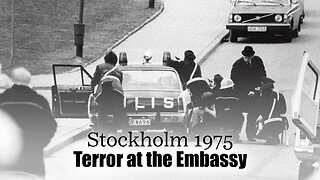 50:55
50:55
Adaneth - History&Politics
8 days agoStockholm 1975: Terror at the Embassy | The Attack (Part 1 - MULTISUB)
56 -
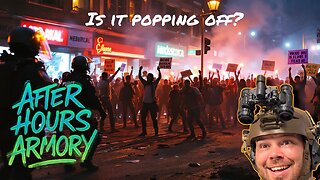 LIVE
LIVE
BlackDiamondGunsandGear
2 days agoAFTER HOURS ARMORY / Antifa / Lies/ Prison time
99 watching -
 LIVE
LIVE
DLDAfterDark
4 hours ago $0.02 earnedThe After Hours Armory! Tonight is The Chat's Chat! God, Guns, and Gear!
219 watching -
 3:32:18
3:32:18
Mally_Mouse
7 hours ago🌶️ 🥵Spicy BITE Saturday!! 🥵🌶️- Let's Play: Phasmophobia
28.1K2 -
 1:13:19
1:13:19
iCkEdMeL
3 hours ago $0.31 earnedChaos Explodes in Chicago & Portland | Feds Clash with Protesters!
18.8K4 -
 21:54
21:54
Exploring With Nug
1 day ago $6.64 earnedScuba Diving Missing Person Search Leads to Discovery of Classic Cars!
44.1K8 -
 LIVE
LIVE
Phyxicx
7 hours agoStar Wars: Movie Battles II Community Event hosted by ReaperAF95 - 10/4/2025
134 watching -
 1:19:51
1:19:51
World2Briggs
6 hours ago $0.11 earnedThe US This Week
26.5K2 -
 2:31:13
2:31:13
Joker Effect
3 hours ago"MAKE STREAMING GREAT AGAIN" - Brands Step Up Finally. Birth of Rumble Community. Taking Leadership
14.6K1 -
 5:02:17
5:02:17
Illyes Jr Gaming
7 hours ago"Machine Gun" Takes On BLACK OPS 7 Beta DAY 3!!!
9.44K
